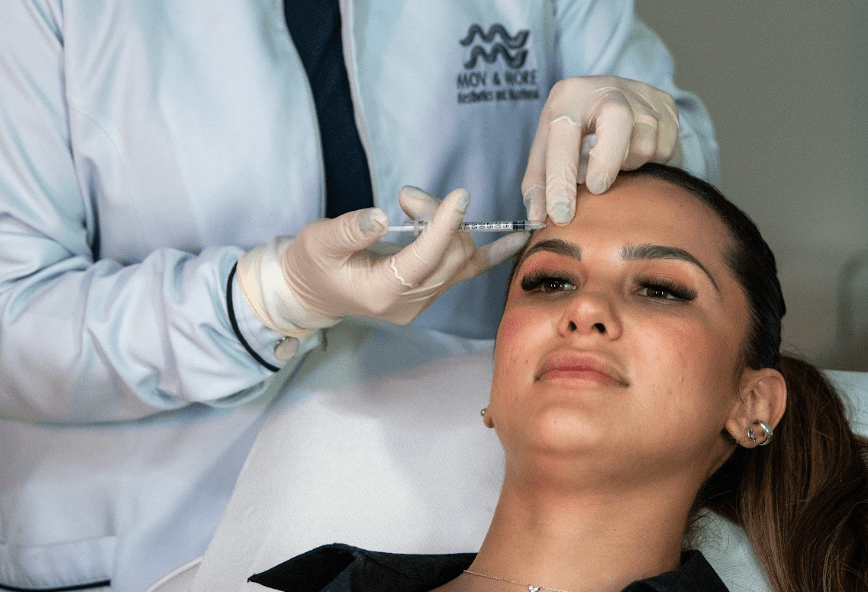Both Cryolipolysis and Fat dissolving injections are popular non-invasive fat reduction treatments for eliminating stubborn fat. However, with two distinct approaches, choosing the ideal treatment for your specific needs can be challenging.
Delve into the details of each procedure and discover the key factors to consider when making your decision on which procedure to choose to get rid of stubborn fat.
What is Stubborn Fat?
Stubborn fat is a common aesthetic concern that affects many people. This accumulation of adipose tissue often stems from unhealthy lifestyle habits, such as a diet rich in processed foods and refined carbohydrates, coupled with a lack of regular exercise.
When calorie intake exceeds caloric expenditure, the body stores excess fat, primarily in areas like the chin, underarms, abdomen, flanks, hips, thighs, and buttocks. The distribution of this fat is influenced by an individual's genetic predisposition, leading to more pronounced fat deposits in specific regions.
To combat this issue for those struggling to lose stubborn fat, various weight loss treatments have emerged with the objective of eliminating stubborn fat and sculpting the body, restoring patient confidence. Among these procedures, two stand out for their promising results: fat dissolving injections and cryolipolysis.
What is Cryolipolysis? What Are Its Benefits?
Cryolipolysis treatment, often called "fat freezing," is a minimally invasive procedure that utilises controlled cooling to eliminate fat cells. A specialised device is applied to the targeted area, gently suctioning the skin and exposing the underlying fat to temperatures as low as -10 degrees Celsius. Fat cells, being more sensitive to cold than other cells in the body, are selectively targeted and destroyed during this process.
Some benefits of Cryolipolysis include safe procedures with minimal risks, no need for anaesthesia, incisions, or needles, making it a non-invasive option. While individual results may vary, noticeable reductions in fat deposits can be observed within a few weeks. The treatment also stimulates collagen production, improving skin firmness and elasticity in the treated area.
What are Potential Risks of Cryolipolysis?
Cryolipolysis is generally safe, but some temporary side effects like redness, swelling, pain, and bruising can occur in the treated area. These typically disappear within a few days. To minimize these, choose a qualified professional and follow their post-treatment instructions.
What are Fat Dissolving Injections? What Are Its Benefits?
Enzymes are substances that act in the body to break down fat molecules. These fat dissolving injections contain a solution that breaks down fat cells in the targeted area. The enzymes work by breaking down the fat cells, which are then eliminated by the body. Some benefits are:
- Efficient against stubborn fat
- Non-invasive
- No specific preparation is required
- Smooth recovery
- Visible results in the short term
These benefits make this treatment a popular choice for those seeking a less invasive alternative for fat loss and enhancement of body appearance.
What are the risks of Fat Dissolving Injections?
The enzyme treatment can cause some side effects, such as redness, swelling, pain, tenderness, and bruising in the treated area. These symptoms usually disappear within a few days.
Cryolipolysis or enzyme application: Which is the best option for me?
These aesthetic procedures are among the most well-known on the market for eliminating localised fat. The main difference between them is that Cryolipolysis uses a machine that employs colds to freeze fat cells, while enzyme application involves an injectable combination of substances that break down fat in the targeted area.
Both body contouring and fat removal treatments have their own benefits and considerations. Cryolipolysis may be more suitable for larger areas and results in a gradual reduction of fat without the need for injections. On the other hand, enzyme application may be more suitable for smaller areas and provide more immediate results. Consider the following contraindications:
- People with allergies or conditions related to cold should not undergo Cryolipolysis. It is also not recommended for those with higher sensitivity in the area.
- Those with kidney dysfunction or cardiovascular diseases should not undergo enzyme application.
To determine which treatment is best for you, you will need an evaluation with one of our specialists. They will analyse your case, understand your routine, dietary habits, and exercise practices, as these factors significantly influence the results.
Pay attention to the contraindications. If you fall into any of the categories mentioned above, be sure to inform the specialist during your evaluation. Take advantage of this evaluation opportunity to ask all your questions. Come for an evaluation at Movmore Clinic in Dublin and see which protocol is best for you!





